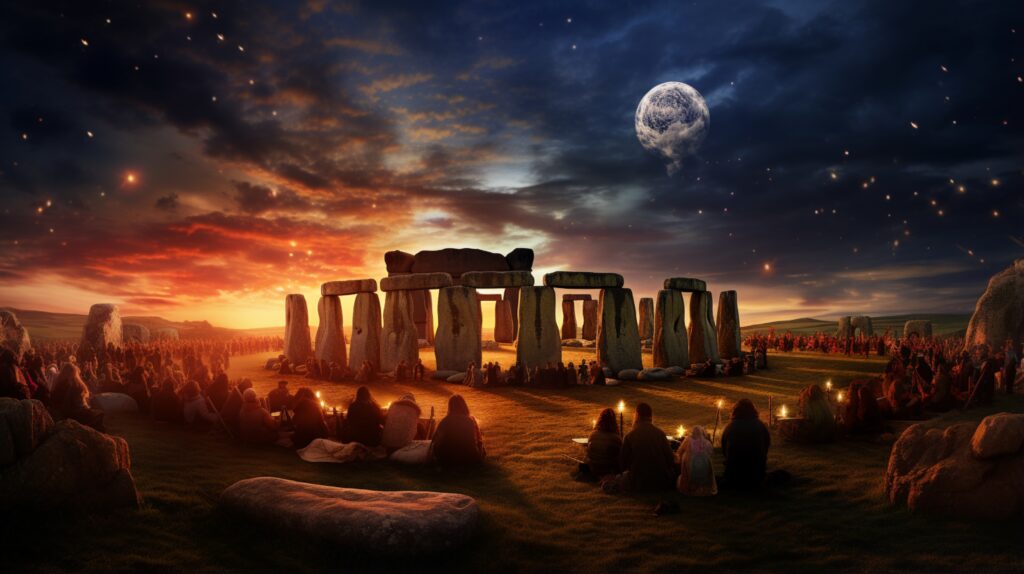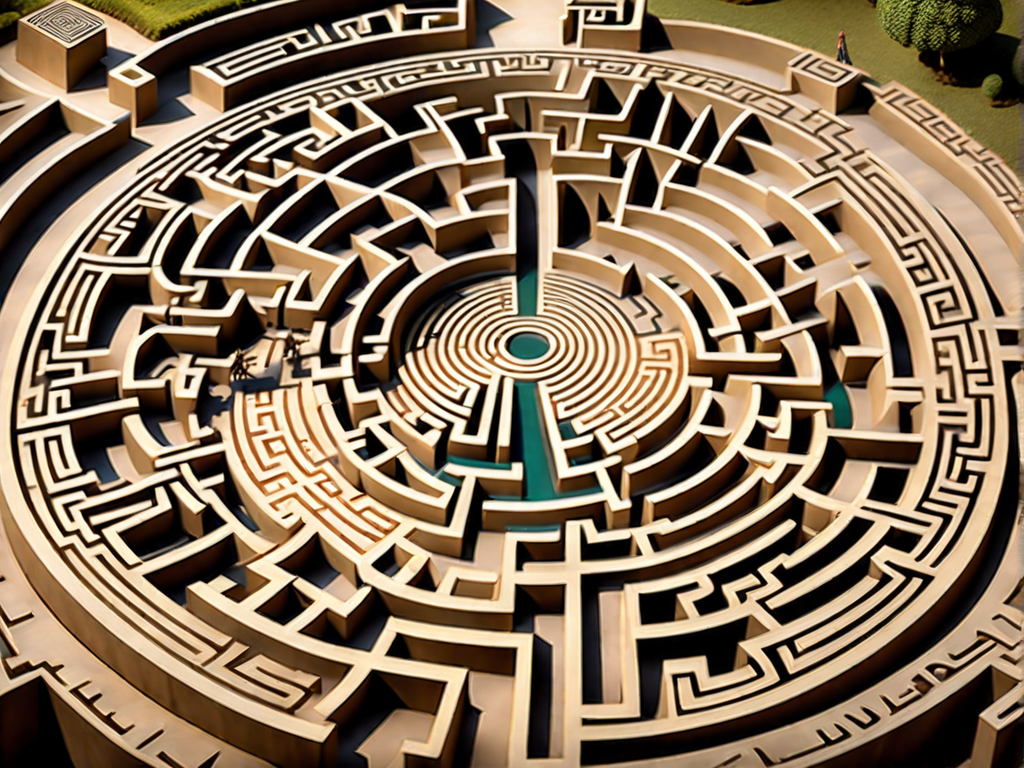Located in Wiltshire, England, Stonehenge is a megalithic structure consisting of towering stone pillars arranged in a circular formation. Its construction dates back over 4,000 years, during the Neolithic period, making it one of the oldest structures on Earth.
Many theories have been proposed regarding the purpose of Stonehenge, but one prevailing idea is that it served as an observatory for ancient astronomers. The alignment of the stones with celestial events suggests that it played a significant role in tracking the movements of the sun and moon.
Stonehenge: An Intricate Megalithic Structure

Stonehenge, a remarkable megalithic structure located in Wiltshire, England, has long captivated the imagination of researchers and visitors alike. Its intricate design serves as a testament to the advanced engineering skills of our Neolithic ancestors.
During the Neolithic period, a time when human society transitioned from hunter-gatherer to early agricultural communities, the construction techniques used in the creation of Stonehenge were a marvel. Massive stones, weighing several tons, were carefully transported over long distances, demonstrating a level of organization and craftsmanship that is awe-inspiring even by today’s standards.
The most recognizable aspect of Stonehenge is its arrangement of vertical stone pillars, known as sarsens, arranged in a circular formation. These megaliths, standing tall and proud, are the centerpiece of this ancient monument. Their purpose, however, remains shrouded in mystery and subject to debate.
“Stonehenge is more than just an aggregation of rocks; it represents the genius and ingenuity of our ancestors.”- Dr. Sarah Parker, Archaeologist
The circular arrangement of these megalithic pillars at Stonehenge suggests a deliberate design, potentially indicating a symbolic or ceremonial purpose. Some experts believe that the circular shape represents the cycle of life, with the stones acting as markers for astronomical events.
Moreover, it is worth noting that the positioning of these stones is not random. They are aligned with precision, indicating a deep understanding of celestial movements and the passage of time. Many theories propose that Stonehenge served as an observatory for tracking the sun, moon, and stars, possibly aiding in the measurement of important calendar events and seasons.
As we continue to unravel the mysteries of Stonehenge, we gain a deeper appreciation for the ingenious minds of our ancient ancestors. The precise construction techniques and the significance placed on celestial alignments highlight the cultural and scientific achievements of the Neolithic people. Stonehenge stands as a testament to their ingenuity and offers a glimpse into our collective past.
Unraveling the Astronomical Significance of Stonehenge
In the quest to decipher the mysteries of Stonehenge, one aspect stands out in particular – its astronomical significance. This ancient monument holds a remarkable connection with celestial bodies and the cosmic rhythms that govern our universe.
Astronomers and archaeologists have long studied the alignments of Stonehenge with the movement of the sun, moon, and stars. These alignments suggest that Stonehenge served as a celestial observatory, allowing our ancestors to track and understand solar and lunar events.
The monument’s carefully placed stones and meticulously calculated positions are believed to have provided early observers with the ability to predict solstices, equinoxes, and other significant astronomical phenomena. Such knowledge would have been invaluable to agricultural communities, linking celestial events to the timing of crucial activities such as planting and harvesting.
“Stonehenge represents a true marvel of ancient engineering, with its deliberate alignments pointing towards the heavens. This gives us a glimpse into the profound astronomical understanding possessed by our ancestors.”
The intricate design of Stonehenge, coupled with its celestial alignments, suggests a reverence for the cosmos. It is believed that our ancestors sought to forge a connection with the heavens, intertwining their lives with the grand tapestry of the universe.
The Axes of Stonehenge’s Circle
In analyzing Stonehenge, researchers have identified two primary axes – the Aubrey Holes and the Station Stones. The Aubrey Holes align with the rising and setting points of the sun during the solstices, while the Station Stones connect to the major lunar event of the moon’s maximum northerly and southerly excursion – the lunar standstills.
- The Aubrey Holes: Twelve pairs of evenly spaced holes encircle the outer edge of Stonehenge, capturing the light and shadow of the rising and setting sun during the summer and winter solstices.
- The Station Stones: Positioned outside of the main stone circle, these four stones marked the boundaries of the monument and played a crucial role in lunar observations, aligning with the lunar standstills during a lunar cycle.
These deliberate alignments suggest a purposeful design, meticulously crafted to merge earthly and celestial realms, providing insights into both time and space.
Stonehenge’s astronomical significance extends beyond its ability to track celestial events. The monument’s builders possessed an awe-inspiring knowledge of the cosmos, using it not only for practical purposes but also as a means to connect with the mysterious forces that govern our universe.
Theories and Speculations Surrounding Stonehenge

Stonehenge, the ancient monument shrouded in mystery, has captivated the minds of researchers and archaeologists for centuries. While its exact purpose remains elusive, numerous theories and speculations have emerged over time, each offering a unique perspective on this enigmatic site.
One prevailing theory suggests that Stonehenge was a place of religious significance, serving as a sacred space for rituals and ceremonies. The arrangement of the stones and their alignment with celestial bodies could have held deep spiritual meaning for the people of the Neolithic period, connecting them to the divine.
“Stonehenge may have been an elaborate temple, dedicated to the worship of ancient gods and goddesses. Its grandeur and intricate design suggest a place of veneration and reverence.”
Another popular speculation is that Stonehenge functioned as a burial ground, with the monument serving as a final resting place for the elite or those deemed spiritually significant. The presence of burial mounds near the site lends credence to this theory, hinting at a connection between life, death, and the afterlife.
Some researchers propose that Stonehenge had practical purposes, such as an astronomical observatory. The alignments of the stones with celestial phenomena, such as the solstices and equinoxes, indicate that the monument may have been used to track the movements of the sun, moon, and stars.
“Stonehenge could have been an ancient astronomical calendar, helping early civilizations observe and predict celestial events crucial to their agricultural and social activities.”
Despite the multitude of theories, Stonehenge continues to defy definitive explanation, its secrets locked within its Neolithic past. The speculations mentioned here are just a glimpse into the vast array of possibilities surrounding this extraordinary monument.
As further studies and research are conducted, it is hoped that we may one day unravel the true purpose and significance of Stonehenge, shedding light on the mysteries that have intrigued and captivated us for centuries.































